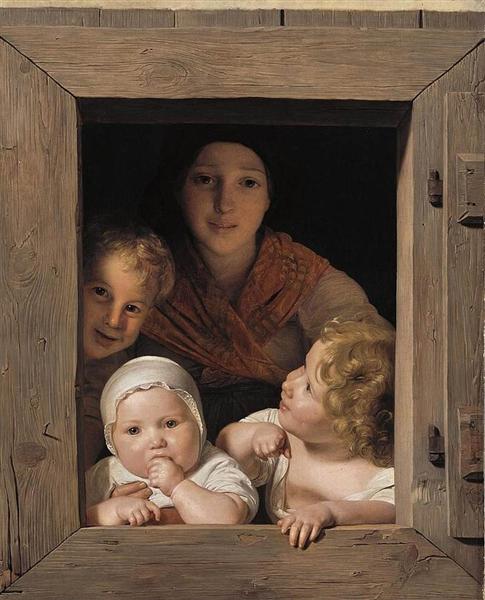1815 - 1848
Biedermeier

description
The German word Biedermeier comes from Biedermann – simpleton, naive person, Maier is a surname.
Biedermeier is a style in German and Austrian art, in particular, painting and graphics, arts and crafts and interior design; it arose on the basis of the principles of romanticism of the German-Austrian province with features of classicism and Empire style.
Key ideas:
Idealism. The artist appreciates the spiritual and intellectual aspect of human life and every small household item, carefully portraying and enhancing its semantic value in their paintings. Painting is filled with the idealistic splendor of the world of the common man, his mood, a practical attitude to life. Therefore, by 1900, Biedermeier acquired the meaning of the “good old days”.
Intimacy. The artist-eyewitness to the unstable political and socio-psychological situation in the country creates the aesthetics of a closed sweet world, in which there is only a circle of loved ones surrounded by grace. The main themes are “well-fed” dialogues and reading books, raising children and relaxing by the stream, pastoral intimacy and urban tranquility. The visual characteristics of the models in the portraits resemble those of plump, contented porcelain figurines. It is worth saying that even the landscape has a chamber mood. Still lifes consist of compositions of fragrant rose, wildflowers, grapes, apples, branches of fruit trees, fish, oysters, kitchen utensils.
Thanks to the Biedermeier painting, we know that the decoration of those times was simple and comfortable, without complicating elements and decorations, about the petty-bourgeois brevity and practicality of furniture forms, about light and cozy interiors, about the fashion for porcelain, which was painted with floral-landscape motifs.
Key artists: Ferdinand Georg Waldmüller, Ludwig Richter, Karl Spitzweg, Moritz von Schwind, Georg Friedrich Kersting, Julius Schoppe, Anton Zwengauer, Franz Xaver Petter, Rudolf Haupmann, Eduard Gurk.
Key works:
The day laborer with his son. 1823. Ferdinand Georg Waldmüller.
Resting on the Vine. 1845. Karl Spitzweg.
Honeymoon trip. 1867. Moritz von Schwind.
